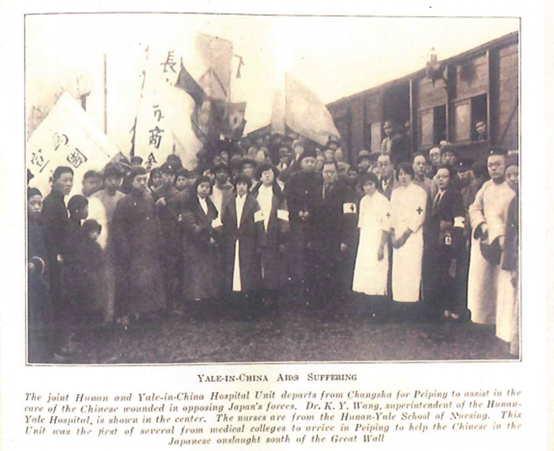On December 10th of the year when the 'September 18th Incident' broke out, Xiangya Medical College (now Xianya School of Medicine) changed its physical education classes to military medicine, initiating the reserve of medical talents for the war effort. In 1932, Xiangya utilized the auditorium of the Provincial First Normal School for lectures twice a week, assisting the Military Training Committee of high schools and above in Hunan in organizing field first aid training classes, continuing to reserve medical talents for the war effort.
In the history of medical education at Central South University, the first documented frontline medical team in the resistance against Japanese aggression was led by Dr. Wang Zixuan (also known as Wang Guangyu), the dean of Xiangya Medical College. At that time, Wang Guangyu served as the dean of Xiangya Medical College, the dean of Xiangya Hospital, and concurrently as the president of Xiangya Nursing School. On February 18, 1933, the 'Tianjin Yishi Bao' reported with the title 'Xiangya Medical College Organizes Northeast Rescue Team, Wang Guangyu Serves as the Captain, Heading North, and Establishes a Field Hospital for Rescue Operations.'
On March 4, 1933, the Battle of the Great Wall against Japan broke out. On the 10th, Dr. Wang Guangyu personally led the Xiangya Northeast Rescue Team to rush to Beiping (now Beijing), participating in the medical rescue work in this battle. The rescue team worked at the front line until mid-April of the same year before returning to Changsha.

The image depicts the scene of more than 2,000 people from the Anti-Japanese Association of Hunan Province, Changsha Chamber of Commerce, Student Anti-Japanese Association, and students from various schools including Yefang, Shenggong, Yale, and Xiangya, bidding farewell to them at the Xiaowu Gate outside the train station. The fifth person from the left in the front row is Mr. Wang Guangyu.
Authors: Huang Shanqi, Li Song